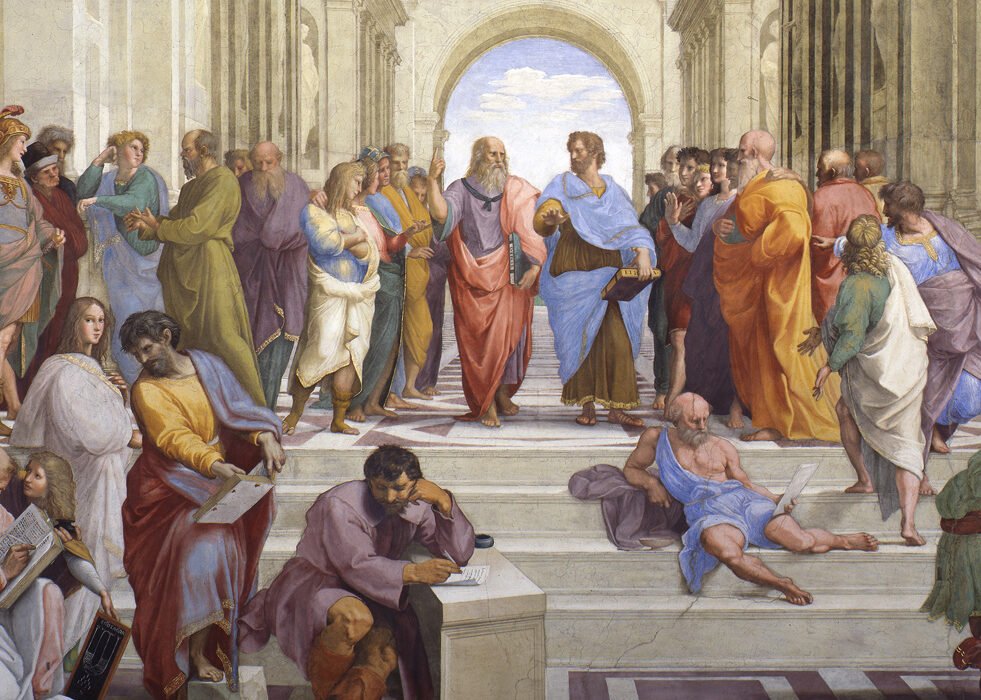Throughout the world, standing in silence and grandeur, ancient temples rise like frozen hymns of devotion. They are not merely places of worship, nor simply the remnants of long-lost civilizations. These structures, carved in stone and time, pulse with a deeper resonance. Their very foundations hum with patterns older than writing, etched not just into their walls but into the very fabric of existence. This is the realm of sacred geometry—the ancient, universal language of proportion, pattern, and cosmic harmony.
From the golden peaks of Angkor Wat to the hidden chambers of the Great Pyramid, from India’s star-shaped temples to the spiraled stones of Newgrange, sacred geometry lies at the heart of temple design. It is the invisible architect, the spiritual compass, the blueprint of the divine made manifest in matter.
This article takes you on a journey through space and time to uncover the sacred mathematics behind ancient architecture. We will explore how civilizations separated by oceans and centuries somehow tapped into the same geometric truths—truths that link the human spirit to the rhythm of the cosmos.
The Geometry of Spirit and Stone
Sacred geometry is not merely mathematical. It is a philosophy, a science, a spiritual practice. It seeks to express the divine order of the universe through form and proportion. At its core are geometric principles such as the golden ratio, the Fibonacci sequence, fractals, and Platonic solids—forms that appear in nature, in the human body, and across the cosmos.
Ancient cultures did not separate the physical from the spiritual. The building of a temple was an act of cosmic alignment. Its orientation, dimensions, and layout were not arbitrary—they were carefully chosen to mirror universal principles. Temples were microcosms of the universe, designed to resonate with the earth, the stars, and the inner architecture of the soul.
The builders believed that by walking through these sacred spaces, one was moving through a symbolic journey—a path of initiation and transformation. The geometry itself guided consciousness, focusing attention, calming the mind, and opening the heart to deeper states of awareness.
The Great Pyramid of Giza: Monument of Mathematical Mysticism
The Great Pyramid of Giza, one of the most studied structures on Earth, is also among the most enigmatic. Built around 2500 BCE, it aligns perfectly with the cardinal points and incorporates advanced mathematical concepts that continue to baffle scholars.
The ratio of the pyramid’s base to its height is nearly identical to the value of pi. When multiplied, its dimensions produce values astonishingly close to the number of days in a year. These are not accidents of stone stacking—they are intentional, encoded messages. The pyramid is not simply a tomb; it is a cosmic clock, a geometric model of Earth, and, perhaps, an ascension chamber.
The internal structure, with its ascending and descending passageways, echoes initiation rites found in mystery schools. Some researchers suggest that these passages symbolized the journey of the soul through darkness and light, birth and rebirth, ultimately aligning with the star Sirius—associated with Isis, the Egyptian goddess of rebirth and spiritual awakening.
The pyramid’s geometry also mirrors the golden ratio (1.618), a proportion found throughout the natural world—from seashells to galaxies. This ratio, also known as phi, was revered as a symbol of perfection and divine proportion.
Angkor Wat: Cosmic Mandala in Stone
Hidden in the dense forests of Cambodia, Angkor Wat rises like a sacred lotus from the Earth. Built in the 12th century by the Khmer Empire, it is the largest religious monument on Earth—but more than that, it is a living mandala, an architectural representation of the Hindu cosmos.
The temple’s layout is based on a complex system of sacred numbers and proportions. The central tower represents Mount Meru—the axis mundi in Hindu and Buddhist cosmology—while the surrounding courtyards and moats symbolize the cosmic oceans and mountains.
Each element is placed with astronomical precision. The alignment of Angkor Wat’s towers with the spring equinox sunrise suggests the temple was not just a house of worship but an observatory—a calendar in stone.
Sacred geometry pervades the site: lotus patterns, star shapes, and recursive structures that mimic fractals in nature. The corridors are designed with perfect symmetry, drawing the pilgrim inward toward the center—a metaphor for the spiritual journey from multiplicity to unity, from illusion to truth.
The Temples of India: Star Maps and Energy Grids
Nowhere is sacred geometry more visibly integrated into daily life than in the temples of ancient India. Temple construction followed the ancient guidelines of Vastu Shastra, a system that blends architecture, astrology, geometry, and spiritual philosophy.
Take the Chennakesava Temple in Karnataka, for example. Built in the 12th century, it features a star-shaped platform—a design not merely decorative, but symbolic. The star represents purity, balance, and celestial connection. Its repeating, nested shapes draw the eye and the spirit into rhythmic contemplation.
Temples were often aligned with magnetic north and built over ley lines—believed to be subtle energy paths running through the Earth. The central sanctum, or garbhagriha (womb chamber), was a high-energy space where the deity resided. It was small, dark, and powerful—a symbolic return to the cosmic womb.
The entire temple plan followed the vastu purusha mandala, a sacred geometric grid representing the divine body. Each square in the grid housed a deity or force, and the temple’s layout was a living cosmos, with the main deity as its heart.
Even the tall spires, or shikharas, rising from Indian temples follow the shape of the Sri Yantra—a complex, interlocking geometric diagram that represents the union of the masculine and feminine, matter and spirit. The Sri Yantra itself is one of the most powerful expressions of sacred geometry, with deep layers of meaning encoded in every line.
Mesoamerican Temples: Calendars, Cosmos, and Code
In the jungles of Central and South America, ancient civilizations such as the Maya, Aztec, and Olmec built pyramids that functioned as both temples and astronomical observatories. These cultures understood that time was cyclical, not linear—and their temples were tools for harmonizing with cosmic rhythms.
The Pyramid of Kukulcán at Chichen Itzá is perhaps the most famous example. On the spring and autumn equinoxes, a shadow in the shape of a serpent slithers down the steps—created by the precise angle of sunlight on the temple’s staircase. This phenomenon is no accident. It is a solar calendar, a celebration of celestial alignment encoded in sacred geometry.
The number of steps—91 on each of the four sides plus the top platform—totals 365, the number of days in a solar year. The pyramid thus becomes a timekeeper, an echo of the cosmos frozen in limestone.
Many Mesoamerican temples were built on grid patterns that corresponded to planetary movements and sacred cycles. The Mayan calendar systems, which tracked both solar and galactic cycles with astounding accuracy, were often inscribed directly into temple walls. To walk these sites was to walk through time itself, guided by a geometry that flowed with the stars.
Stone Circles and Spiral Temples: The European Mysteries
In Europe, sacred geometry takes a more primal, yet equally profound, form. The megalithic structures of Stonehenge, Newgrange, and Callanish predate many written records, yet their builders had a deep understanding of geometry and astronomy.
Stonehenge, built over 4,000 years ago, is aligned with the solstices. Its layout forms a circle—the symbol of unity, eternity, and the feminine principle. The stones are placed at distances reflecting Pythagorean triangles and golden ratios, though these were not named as such at the time.
Newgrange in Ireland, even older than the pyramids, is a spiral temple. On the winter solstice, a shaft of sunlight enters the long passage and illuminates the inner chamber—a symbolic rebirth of the sun. The triple spiral carved into its stones is a sacred geometric symbol found in many cultures, representing life, death, and rebirth.
These ancient builders left no written explanations, but their temples tell a clear story—one of reverence for cosmic cycles, solar rebirth, and the geometry of life itself.
Sacred Geometry as a Tool for Transformation
Why did ancient cultures pour so much energy into geometric precision? The answer lies not just in aesthetics or astronomy, but in transformation. Sacred geometry was believed to be more than symbolic—it was operative. It had power.
Walking through a temple built on sacred proportions alters the energy of the body. It harmonizes the mind. It opens the heart. It was believed that by simply meditating within such structures, one could access higher states of consciousness.
This is not conjecture. Modern studies in cymatics—the study of sound vibration—show how geometric patterns emerge from sound frequencies. Temples designed with specific proportions resonate in similar ways, acting as tuning forks for human consciousness.
Pilgrims came not just to pray, but to be transformed. Every column, every arch, every angle was designed to support that process. Geometry became initiation.
Modern Rediscoveries and the Return of the Sacred
In recent decades, there has been a resurgence of interest in sacred geometry—not just among scholars and architects, but among seekers, artists, and scientists. The same patterns found in ancient temples are appearing in quantum physics, neuroscience, and environmental design.
Architects are beginning to incorporate golden ratios, Fibonacci spirals, and mandala forms into buildings designed to promote healing, creativity, and inner peace. Schools, hospitals, and spiritual centers are rediscovering what the ancients always knew: that space shapes spirit.
Sacred geometry is also returning in art, music, and meditation. Mandalas, yantras, and fractal images are now tools for mindfulness and therapy. Sound healing, using harmonic frequencies aligned with sacred proportions, is helping to restore balance and well-being.
In a world where disconnection, fragmentation, and chaos seem to dominate, sacred geometry offers a path back to wholeness—a remembrance of our place in a greater, harmonious order.
Conclusion: Rebuilding the Temple Within
The temples of the ancient world were not just monuments to the gods—they were mirrors of the universe, maps of consciousness, and blueprints for inner awakening. They spoke a language without words, a language of proportion and form, of light and shadow, of geometry and grace.
Today, though many of these temples lie in ruins, their wisdom remains intact. It lives in the golden spirals of sunflowers, in the swirl of galaxies, in the pulse of the heart. It waits in silence, ready to be heard again.
The return to sacred geometry is not about copying the past. It is about remembering a truth that never left us: that we are part of a cosmic design, and that by aligning with it, we come home—not just to the sacred, but to ourselves.
The temples of old may crumble, but the temple within remains. Built not of stone, but of awareness, attention, and love. And its architecture, as ever, is sacred geometry.






